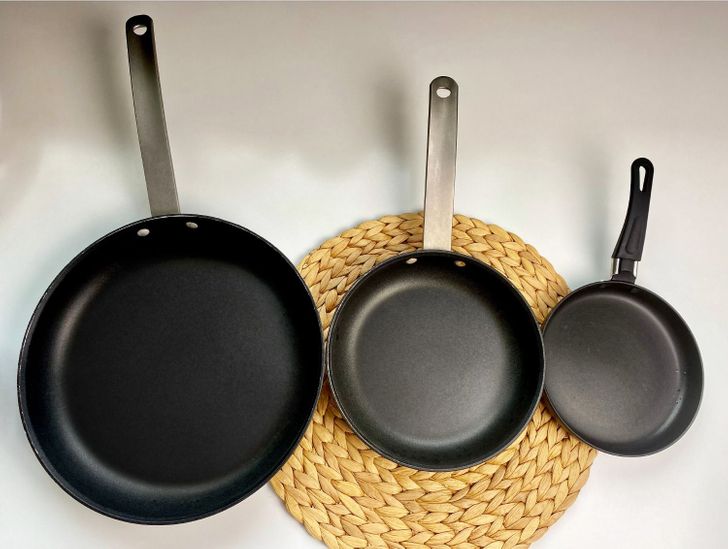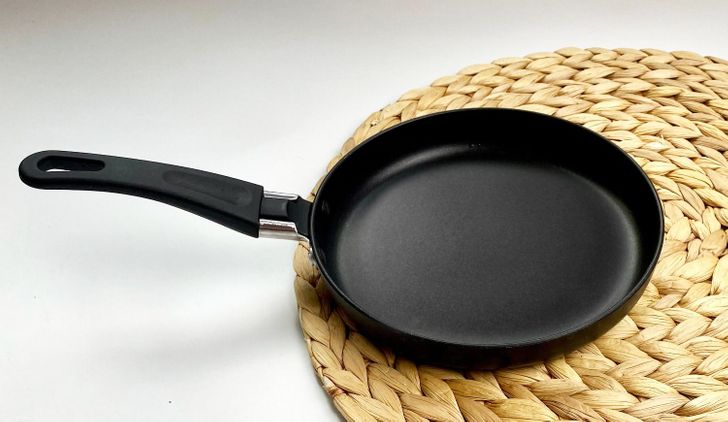How to Choose a Good Frying Pan

A frying pan is something everyone should have in their kitchen. It’s necessary to make all sorts of different meals. The choice of size and material will define the taste and quality of your food as well as how long you can use the pan.
5-Minute Crafts invites you to learn more about the parameters you need to pay attention to when choosing a frying pan.
When buying a frying pan, you should take many factors into account. First of all, check what kind of stove you have. For example, there are some induction cookers that require special pans.
Additionally, you need to think about what you’re going to use the pan for, how much food you’re used to making, what meals you prefer, and whether or not you need non-stick surfaces.
Another important factor to consider is how you’re going to wash the frying pan. If you’re using a dishwasher, find out if specific models of frying pans can be washed in there.
Diameter
-
Less than 22 cm are considered small frying pans and are good for making simple meals like sauces and vegetables for soups.
-
24 cm to 26 cm are considered average size and are good for making full meals. Plus, the diameter is no bigger than the cookers.
-
28 cm to 30 cm are considered large pans and can save time needed to make a meal because a lot can fit on them. But the biggest cookers are usually 24 or 26 cm in diameter, so a pan bigger than this is pretty much useless.
Purpose
-
Classic: This is a universal pan with average sides that’s great for cooking very different meals.
-
Brazier: These aren’t very popular and have 2 handles with straight sides. However, they’re very versatile because they’re typically made of metal and can be used on the stove or in an oven.
-
Wok: This pan is used to fry meat, as a wok, and for cooking vegetables at high temperatures. It has wide, high sides and a relatively small bottom diameter.
-
Grill: This is a special pan that is used to make meat or fish to prevent the juice and fat from touching the food.
-
Saute: This is a pan with high sides and is great for frying and stewing.
-
Pancake: This pan has low sides and is good for making pancakes.
Material
-
Cast iron: This material heats up evenly and takes a long time to cool down. It’s believed that cast iron cookware makes the most delicious meals. You can put them into ovens, which makes them even more universal — you can even bake pies in them. They’re extremely durable and the only disadvantage is that you can wash them in dishwashers and keep food in them.
-
Stainless steel: This material is used by many professionals. Stainless steel conserves the bright taste and color of the ingredients. However, if this pan doesn’t have a special non-stick surface, everything sticks to it unless it’s stirred regularly. Stainless steel is durable and you can wash it right after cooking.
-
Ceramics: Such pans are great for cooking without oil because almost nothing sticks to them. They are ecological and durable. You can heat them to very high temperatures. But ceramic pans can’t be used on induction stoves. And if you drop them or cool them down fast, they can break.
-
Aluminum: This cheap material has the advantage of being lightweight. Such pans are durable, but in order to prevent the food from sticking to them, cooking temperatures need to be quite low. The ingredients need to be stirred all the time. Aluminum pans are easy to scratch so they can’t be used with abrasives.
Surface
-
Teflon: This is a very popular non-stick surface. It’s great for cooking but if it’s damaged, even a bit, it produces harmful chemicals. It’s really easy to scratch, so you have to be really careful. It’s not a very durable material.
-
Marble. Actually, this is just Teflon with marble — it’s more durable and heats more evenly.
-
Ceramic. Way more ecological than Teflon, this material requires a bit more care as it doesn’t do well with scratches, can break easily, and is sensitive to temperature changes.
-
Nanocomposite (also known as titan, diamond, granite): This surface is of the highest quality and is most expensive. The pans heat up evenly, are great for high temperatures, and food cooked in them remains healthy.
Recommendations
-
Choose frying pans with at least 5-millimeter walls and multi-layered bottoms. This rule is true for any material.
-
If you want to be able to use a frying pan in the oven, buy one with removable or metal handles.
-
Don’t use pans with copper or aluminum bottoms on glass stoves because they will leave marks.
-
If you have an induction stove, you can’t use ceramic, glass, copper, or aluminum pans.





